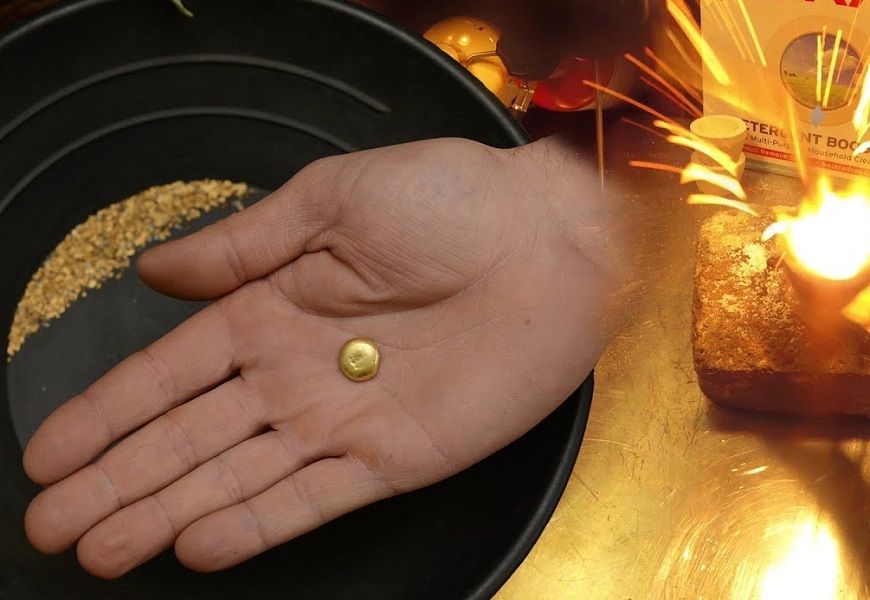Gold - A metal that is often used to make jewelry and jewelry. In the periodic table of Mendeleev, it is number 79. To form it into any shape or object, it must be heated to a certain temperature so that it melts. The temperature melting depends directly on the proof. In this article we will consider the questions at what temperature Celsius gold melts and how to do it properly at home with your own hands.
Valuable physical and chemical characteristics of gold. Application of gold in various fields of production
Gold has a number of special physical and chemical characteristics. They include high electrical and thermal conductivity, ductility, malleability, and corrosion resistance. It has a pleasing appearance that pleases the eye. Therefore, the main areas of application are the following branches of human activity:
- Fabrication of precious items. These can be both piece jewelry items (e.g., rings, teeth in dentistry) and fabricated ingots. Jewelry is usually used as an accessory to create images. Bullion bars form the gold reserve of countries and are the basis of monetary turnover, as well as a product of trading on the financial markets.
- Production of high-precision electronics. These can be transistors, capacitors, semiconductors and devices based on them, microcircuits for personal computers, and radio components.
- The chemistry of various processes. Gold is an excellent catalyst for complex chemical reactions.

Why gold is smelted and mixed with less precious metals
Gold is a hard refractory metal that is often mixed with other metals such as copper, silver, iron, aluminum, and platinum. In doing so, it often changes color (it becomes white, brown, red). Alloy Objectives:
- Increased strength. Pure gold is easily deformed. That's why it is alloyed with stronger elements to produce a harder material.
- Cost savings. Pure gold is an extremely expensive metal. To save money, it can be alloyed with cheaper components - the price of the final product will be lower.
- Giving gold a unique color (pink, white, green, blue, purple, and other alloys). Ligatures different metals are responsible for the corresponding shade.
To mix metals, they must be heated to a certain temperature at which it changes from a solid to a liquid state (melting phenomenon). This is called the melting point. If necessary, the material can also be heated after it has melted.
When gold reaches a certain temperature, it can begin to evaporate (this mark is called the boiling point).
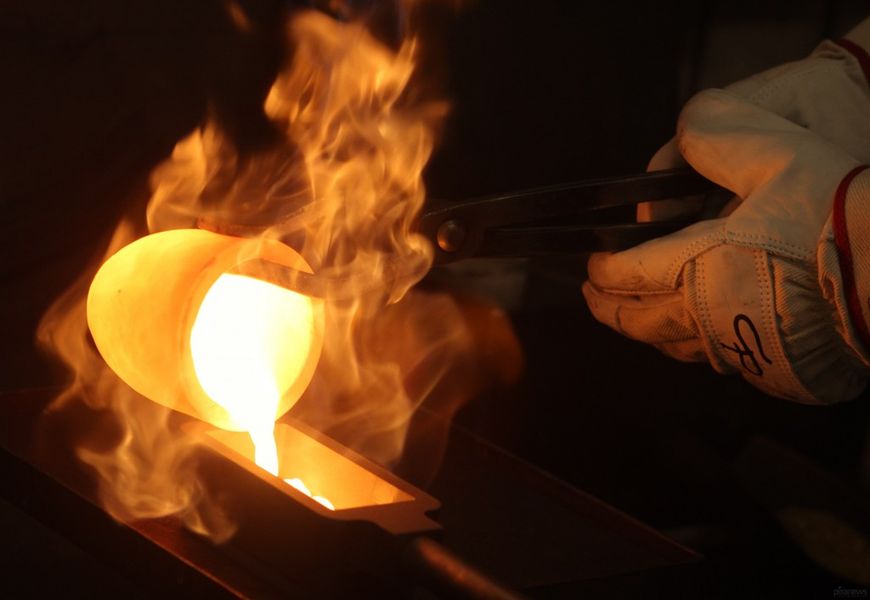
Maximum melting temperature of gold: the higher the assay, the higher the degree
The gold standard is the specific concentration of gold in an alloy. The most popular grades are 999, 585 and 375. The number reflects the ratio of gold content per 1,000 units of material. The 999 standard contains 999 grams of gold, the rest 1 gram being admixtures. The following rule applies: the higher the proof, the higher the melting point.
- 375 gold melts and becomes liquid at about 600-750 degrees.
- Gold product 585 pink - at a temperature of about 700-850 degrees Celsius.
- Melting point of gold 999 proof - 1064 degrees Celsius. The boiling point of high-grade gold (999) is about 2,700 degrees Celsius.
Important: If interested in the melting point in Kelvin, add 273 to the numbers.
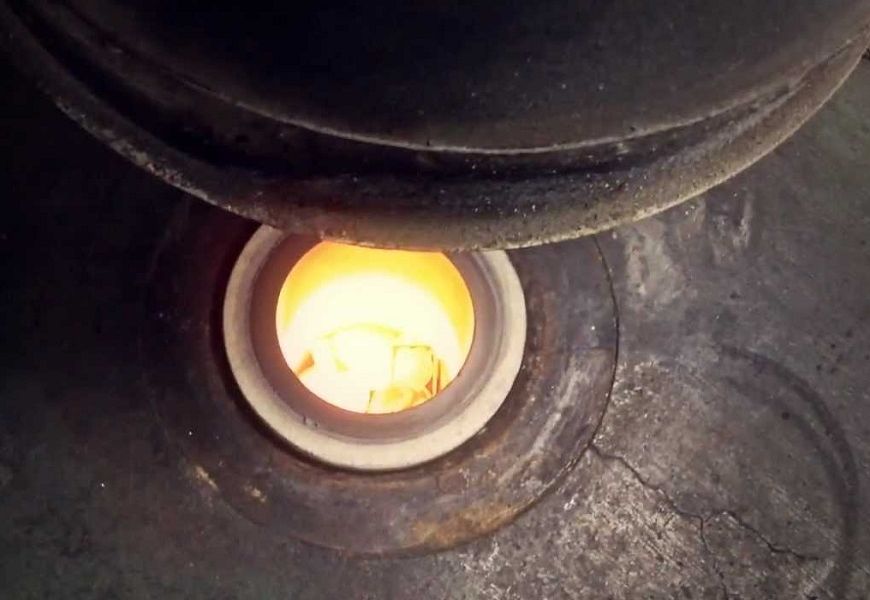
Comparative analysis of melting temperatures of different gold samples
| Gold | Silver | Copper | Zinc | Cadmium | Melting point |
|---|---|---|---|---|---|
| 999 | Trace amounts | Trace amounts | Trace amounts | Trace amounts | 1064 |
| 585 | 138 | 229 | 36 | 12 | 850 |
| 585 | 163 | 207 | 46 | 850 | |
| 585 | 125 | 205 | 85 | 830 | |
| 585 | 160 | 205 | 30 | 20 | 820 |
| 585 | 150 | 205 | 30 | 30 | 800 |
| 585 | 193 | 133 | 33 | 56 | 790 |
| 585 | 100 | 225 | 90 | 770 | |
| 585 | 104 | 176 | 20 | 115 | 710 |
What metals change the melting point of gold
In gold alloys, the melting point is changed by certain impurities (alloying components). Popular alloying agents are silver, copper, zinc, cadmium, and iron. Cadmium and copper lower the melting point the most, while silver and zinc have little effect on the melting point.
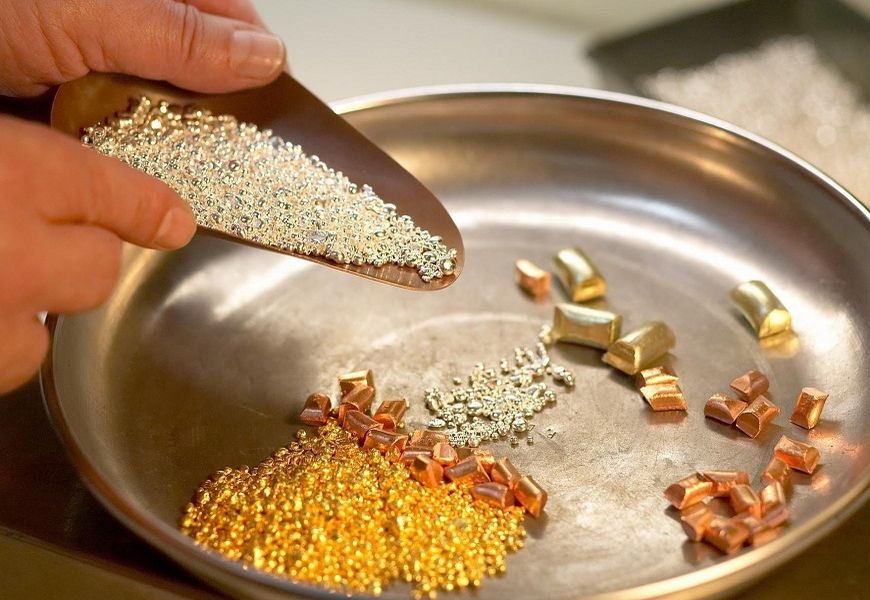
Stages of preparing gold for smelting
To make gold bars, natural ore or nuggets are used, which undergo a procedure of mining, concentration and remelting. Most often the ore is smelted in factories using special furnaces after a three-step preparation process:
- Mechanical cleaning of the material. Strong water pressure is used to separate particles from earth and stones. The water may contain additional additives that improve the quality of cleaning.
- Affinity-chemical cleaning (of impurities). Cleaned metal still contains particles of dust or other elements. To reduce their amount, the material is washed with Tzar's vodka.
- Deposition of the metal alloy. After purification with aqua regia, the material is placed in pure water, where the final purification of the material takes place. Particles sink to the bottom (due to high density) - after sedimentation, they are taken out and dried.
Smelting gold in special melting furnaces
Gold particles are placed in a furnace, where they are heated to their melting point. After it is reached, they take a liquid form and are poured into the corresponding ingot or product forms (depends on the crucible shape) until they cool completely. For melts material in the factories can use different furnaces:
- Gas. The crucible is placed inside the furnace, a gas burner is brought in. During start-up, the burner heats the crucible, which transfers the heat to the gold particles.
- Induction. The crucible has electrical wires connected to a current source. When the circuit is closed, the electricity heats the mold and melts the material inside.
- Muffle. There are electric heating elements on the bottom and sides of the crucible. They start to heat up when the circuit is closed, which also leads to the melting of the material.
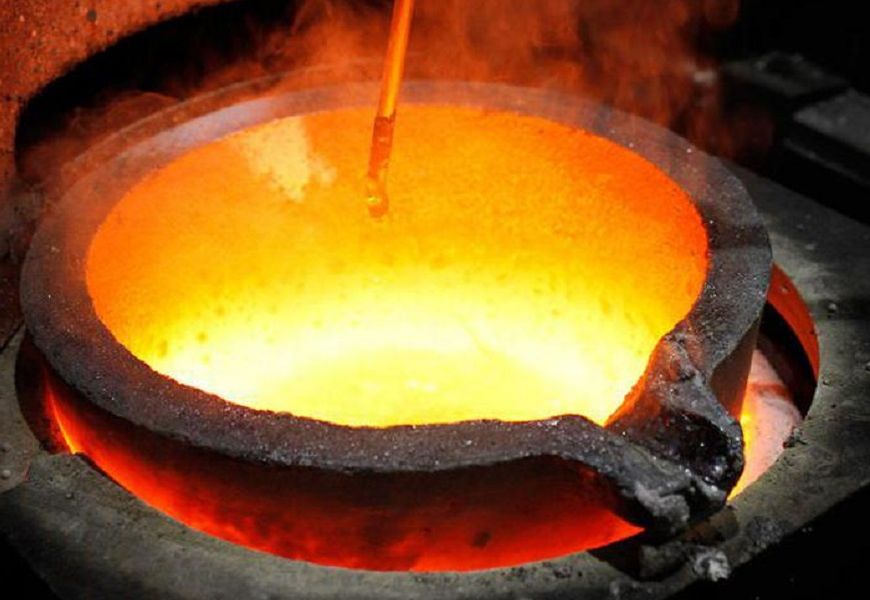
Top 3 effective ways of melting gold at home
The basic methods of melting were discussed above gold pieces in factories. However, there are craftsmen who have learned to transform this material into at home. Practice shows that such smelting is more "black" compared to factory smelting. If the basic rules of remelting are followed, it is possible to obtain a quite pure alloy, which will contain a minimum of impurities. Instructions on how to smelt gold yourself:
In a crucible on a domestic gas burner:
- Put a refractory crucible on a flat surface (it makes sense to use a brick).
- Assemble the gas burner, start it up and heat the crucible a bit.
- Place the gold particles one at a time in the crucible, do not stop heating the container.
- Pay attention to the gold material - it should melt completely.
- The melt does not last long - it takes 6-10 minutes to heat 10-15 grams of the substance.
- Turn off the gas burner, take the transferred gold piece out of the crucible and place it on the brick.
- Material cools down quickly - 10-15 grams of product will cool to a temperature of 80-90 degrees in 5-7 minutes.
- To speed up the cooling, you can put the part in a container with clean water.
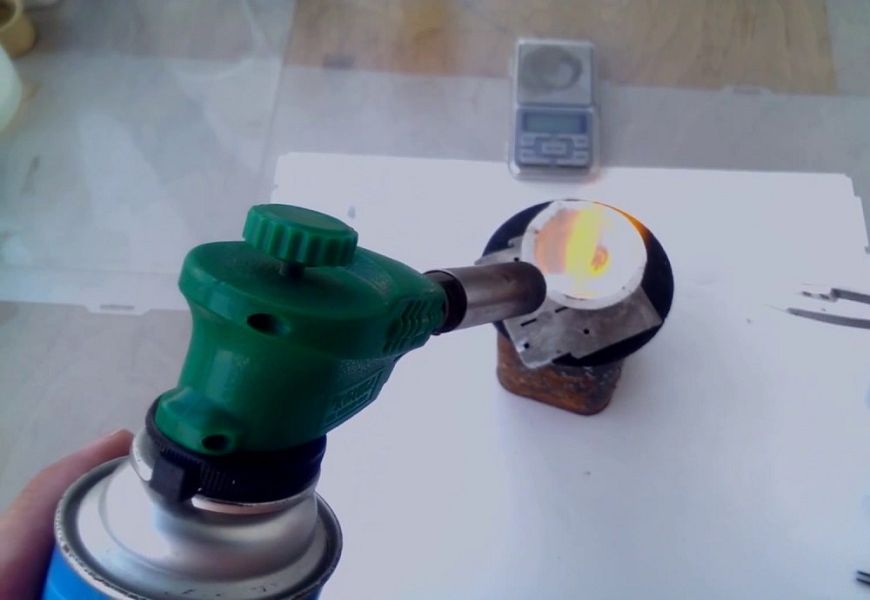
In the melting furnace for precious metals from the online store:
- Connect the furnace to a power source (this can be a regular outlet), but do not turn it on.
- Place the gold pieces inside, close the oven according to the instructions.
- Turn on the furnace - it will independently heat the materials to the desired temperature and melt them.
- After melting, turn off the furnace and allow the ingot to cool (this usually takes 15-20 minutes).
In 12-15 minutes in the microwave oven:
- Place refractory bricks in the furnace, then place a graphite crucible inside.
- In the crucible place all the gold particles that will be subject to melting.
- Close the door, use the timer to set the desired amount of time.
- Remember the rule: 1 gram melts for 4-5 minutes. For example, it takes 12-15 minutes to melt 3 grams.
- When the microwave is done, open the door and wait for the alloy to cool completely.
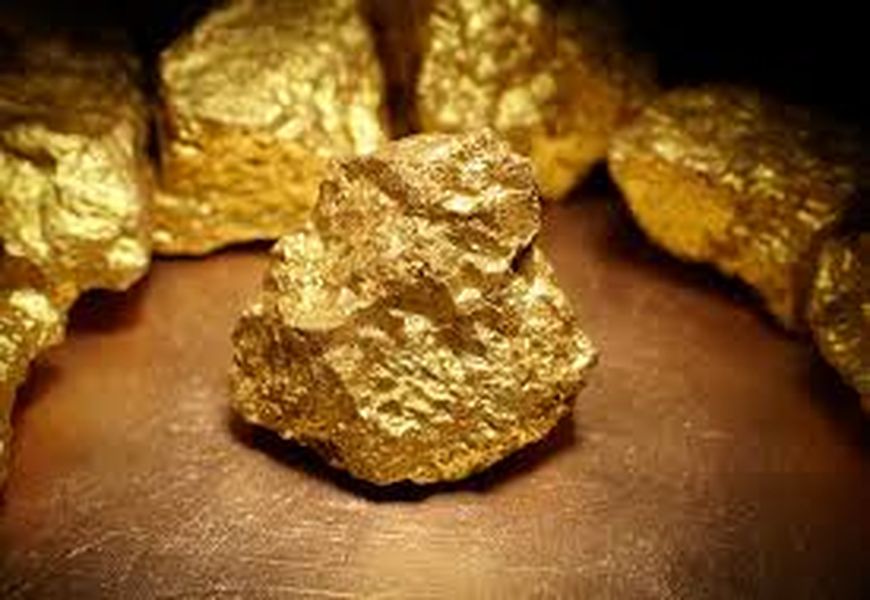
Equipment and materials for home melting of metal
The list of necessary equipment depends on the method of melting the metal:
- Melting with a torch. You will need a cylinder of gas and a torch (autogen) to do the work. It is recommended to melt the gold on a refractory brick that will not crumble when heated. The crucible can be made from refractory clay. It is also recommended that refractory tongs be attached to place the material in the crucible.
- Melting with the use of a melting furnace. Most of the melting furnaces that are sold in online stores belong to the jewelry category. They are completely self-contained (the design contains its own crucible). Therefore, you will only need gold particles.
- Melting with a microwave oven. For melting you should use a microwave oven with a power of 1200 watts or more. You will also need two bricks - you should make two notches in them (bricks are placed in the oven with notches facing each other, so that a free space is formed). It is recommended to make the crucible from graphite (microwave radiation can melt the clay).
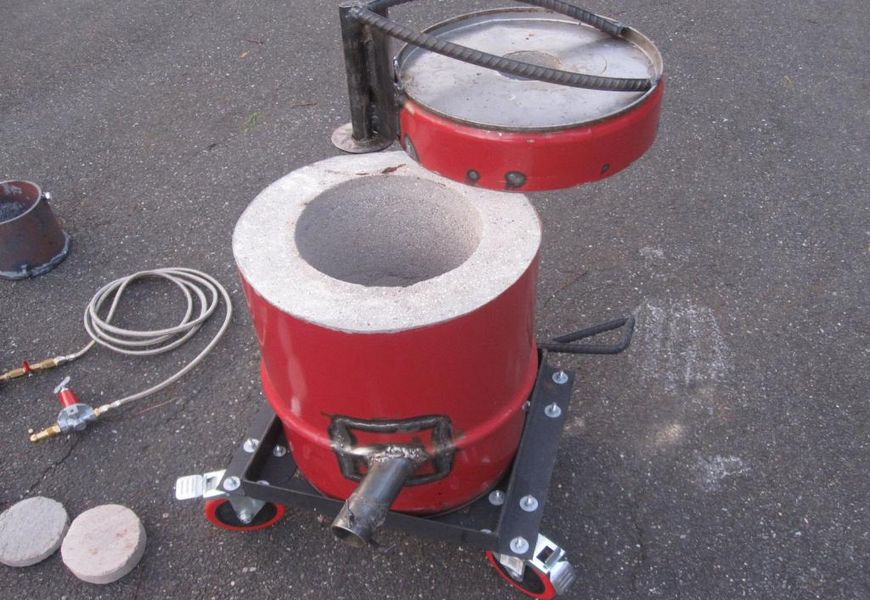
Instructions for making a homemade burner
The gas burner usually costs 1-2 thousand rubles, and you can buy it at almost any online marketplace. If you do not have such a possibility, you can make a gasoline burner with your own hands. To do this you will need the following parts: a compressor for air supply, a plastic container with a lid, a fireproof hose, sealant. Assembly algorithm:
- Make two holes in the plastic container - one on the plug and one somewhere on the side.
- Insert the hose that will be used to supply the heated air into the first hole.
- In the second hole, insert the hose, which is connected to the compressor.
- Use sealant to seal the joints. The device is ready.

How to clean the molten gold from unnecessary compounds
During the remelting process, debris, sand and soot may remain on the surface of the metal. It is easy enough to get rid of them:
- Take a fireproof flask and place it on an electric stove. Work outdoors.
- Carefully and gently prepare a mixture based on water (500 ml), hydrochloric acid (20 ml) and nitric acid (10 ml).
- Heat the mixture, place the melted material, boil it for no more than 4-5 minutes.
How to remelt gold at home - tips and recommendations:
- Potato crucible. Take a large potato, cut off the bottom and the top, use a spoon to make a large notch in it. Now with the help of gas stove perform roasting of the potato until it is completely charred. As a result, you will get a full carbon crucible.
- Ligature. If you want to fuse the gold particles with other metals, then give preference to copper, nickel, or palladium. They increase the strength of the alloy as well as improve its aesthetic properties.
- Training on melchior. Experienced experts recommend that you start melting with melchior (usually used to make spoons). It is inexpensive, and its physical properties are very similar to gold alloy 585, which will help you acquire the necessary technical skills.
The cost of services for melting gold from private specialists
Today, many private specialists offer to perform professional remelting of gold. However, such services are quite expensive. Market analysis shows that the average cost of remelting ranges from 5,000 to 15,000 rubles.
The price is strongly influenced by the following parameters - the metal assay, its total amount, and the type of ligature.
Video: how gold is smelted in factories and at home in the kitchen
Question and answer section
The melting point of 585-gold in degrees Celsius?
Melting point of gold at home
Does gold melt in a fire?
